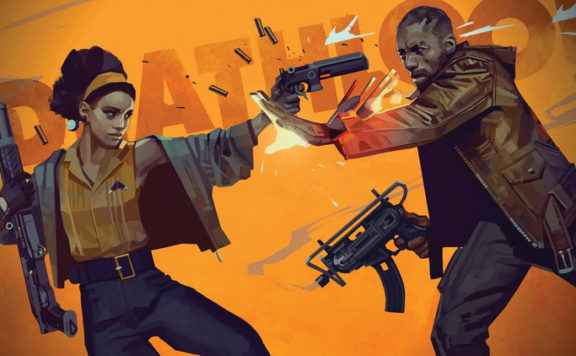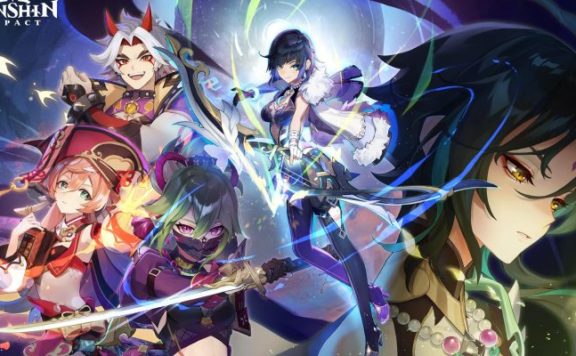Her home stormed by the Inquisition, her parents brutally murdered as she watched, Amicia is left with nothing but her estranged and very young sibling, Hugo, and a perilous flight for her their lives. This is the context we find ourselves in within the first twenty minutes of Asobo Studio’s beautifully rendered A Plague Tale: Innocence. This deep, heartbreaking story is masterfully shown and brought drastically and startlingly to life in a journey that must be experienced. In the next few paragraphs, we will attempt to give you a peek into this masterpiece of a game.
Visually, this game is breathtakingly beautiful, something I would attribute true artistic mastery and the gameplay mechanics meld nearly seamlessly into it, giving way to a depth of immersion most games cannot compare to. Every step of the Amicia and Hugo’s journey is rendered in such stunning exquisiteness that even its darkest moments are astonishing to behold. The sound and music, composed by Olivier Deriviére, perfectly compliments the hauntingly striking visuals and will complete the player’s and viewers step into this grim but lovely tableau. The gameplay is simple, and for the most part intuitive. I did have some issues with the accuracy of control with the analog sticks causing me to all-to-easily slide past doorways I had meant to go through, or items I had intended to interact with. Full disclosure, I always have issues with analog controllers, so keep that in mind.
While the visuals and sounds are, in and of themselves, amazing, they are separate parts of a whole that is an even greater accomplishment. Every aspect of the game is painstakingly crafted and engineered to introduce and carry the story of Amicia and Hugo. A story so perfectly interwoven with heart-shattering grief, love, loyalty, and growth that a literature junky, like myself, is giddy with the realization of such an in-depth project. As mentioned above, the first twenty minutes perfectly sets the stage and I found myself gasping in astonishment almost continuously at the combination of the game’s beauty and the horror brought on by the brutality of events as the stage was set.
Perhaps I should have started with the pronouncement that in my estimation, this game is not children. This game, this story, is not gentle, and the haunting beauty of the visuals and music are the perfect accompaniment to this. So much of the game is embroiled in the stark representation of the horrors, affected by both the peoples and the Inquisition and those of atmospheric origin. Historical information regarding the Inquisition leaves no doubt of the veracity and unrelenting brutality of those that marched under its auspices and Asobo Studio does not soften this concept, matching the brutality of the Inquisition with an equally brutal but honest depiction from the eyes of one targeted by them. Along with that comes another honest depiction of the behaviors of regular, everyday people who have been beleaguered by the horrors of the plague with nothing to turn to but the assertions of their religious authority and fear bred by their own ignorance.
Atmospherically, the developers have created a frighteningly horrific physical embodiment of the Bubonic plague using the well-chronicled perceptions from the time period. Rats. Not just your run of the mill rats, however, but a visually sinister, dreadfully and frighteningly overwhelming hordes of rats whose only hesitance come from light, especially fire. When I say hordes, the best imagery I can think of to give an apt visual is the hordes of zombies in the movie World War Z. Aside from fire, these hordes will not be held long by any barriers and have such numbers that they literally come bursting from the ground in places. Hundreds of them at a time will fill the screen, devouring anything living they come across in a matter of seconds. With a sinister red glow in their eyes, hundreds of them will writhe, unceasingly on the borders of the shadows, waiting for the opportunity to reach Amicia and leave her bones as the only evidence of her existence. Fear the shadows.
 Amicia, as a protagonist, is the depiction youth, dreaming of adventures and pining for the opportunity to prove herself. Her father, as a local lord, is often absent, though his affection for her is evident in their interactions. Her mother is a distant figure as her time is evidently spent attending to Amicia’s younger brother, Hugo, who Amicia rarely interacts with as he is kept separate due to an “illness”. As is usually the case in these stories, when so-called “adventure” comes knocking, it is drastically different, more horrifying, and painful than what our youthful protagonist dreamt of. Nothing prepares her, or the player, for the sudden and violent end to her family and her way of life, and she is left with little, sickly Hugo and a final request from her mother to take care of him and ensure he reaches the care of a physician who had assisted with his care before. And so their journey begins.
Amicia, as a protagonist, is the depiction youth, dreaming of adventures and pining for the opportunity to prove herself. Her father, as a local lord, is often absent, though his affection for her is evident in their interactions. Her mother is a distant figure as her time is evidently spent attending to Amicia’s younger brother, Hugo, who Amicia rarely interacts with as he is kept separate due to an “illness”. As is usually the case in these stories, when so-called “adventure” comes knocking, it is drastically different, more horrifying, and painful than what our youthful protagonist dreamt of. Nothing prepares her, or the player, for the sudden and violent end to her family and her way of life, and she is left with little, sickly Hugo and a final request from her mother to take care of him and ensure he reaches the care of a physician who had assisted with his care before. And so their journey begins.
The gameplay relies a great deal on stealth and they spend much of their time avoiding the attention of the Inquisition, and often people in general. Hugo’s contribution to the gameplay is his ability to slip through holes and gaps, often making him essential in opening otherwise impassable obstacles or obtaining essential items. However, stealth cannot be the answer to every random occurrence, and Amicia finds herself in situations in which she must do the unthinkable to ensure their survival. Her moral struggle in acknowledging what she has had to do is heart-wrenching and if you have any empathy at all may leave you on the verge of tears. Of course, on their journey, the two siblings will struggle with getting to know each other and going through cycles of trust and heartbreak of their own. Not to mention the individuals they do encounter along the way that will range from kind and rebuild their hope, to vicious and unrelenting.
Once again, Asobo Studio’s A Plague Tale: Innocence is a strikingly lovely and soul-withering grim experience that I would encourage any adult player to delve into. As it has a determined path and outcome, choices are minimal and perhaps that might ruin replay value for many. For me, the story is something that evokes such emotional catharsis that it may draw me back again and again.








